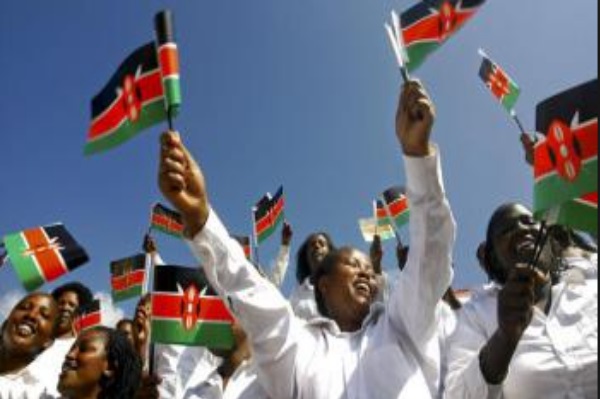As I wrote earlier, the Kenyan elections of August 8, 2017 were canceled due to illegalities and irregularities and fresh ones held on 26th October 2017 amidst controversy. If you thought the polls of 8th August were bad, you should have witnessed the ones of 26 October 2017. The events leading to the election date were dramatized by politicians and lawyers on all television and radio stations each voicing their interpretation of the court ruling and charting a way forward. The IEBC commissioners were clearly overwhelmed and further thrown into confusion when one of their own resigned stating that the Chairman was a man under siege. The Chairman himself came out to say that he could not carry out a credible election. One would expect Jubilee party to be mad at having their victory nullified and that they would spearhead the demand for electoral reforms however the opposite happened. whilst NASA demanded for reforms, Jubilee stated that they were comfortable with things as they stood.
Well the election took place on 26th October 2017 with a record low turn out. There was blatant rigging, violence and irregularities. The main opposition leader Raila Odinga withdrew from the elections because according to him the IEBC did not conform with the court order and did not carry out electoral reforms. For example, IEBC adamantly denied them access to the electoral database, they did not change any member of their team, no one was brought to book after the nullification of elections. So, he claimed that he could not trust the IEBC team to deliver credible elections.
Shortly before the elections, the IEBC was again dragged to court this time by one of the former candidates Peter Aukot for failure to include his name on the ballot paper. the court ruled in his favor and ordered the IEBC to include his name as a candidate. The IEBC in its wisdom chose to include all the eight candidates including Raila Odinga who had withdrawn from the election prior. Raila after his withdrawal went on a campaign dubbed “No reforms, no election” he urged his supporters to boycott the elections and stay home, demonstrations were held countrywide most of which ended in running battles with the police.
The tribal divide in Kenya was publicly displayed on voting day. Voters from Central region were ferried back home to vote free of charge and indeed the rest of the country watched in as the Kikuyu’s and Kalenjins stood in line, some even braved the rains to cast their vote in favor of Uhuru Kenyatta. The world watched as one region of Kenya voted and the rest demonstrated, or refused to vote. some polling stations lay bare with electoral officials taking time off to nap.
Results began trickling in and then more controversy began when the IEBC started announcing conflicting results. the chairman failed to agree in the turn out, first it was 33% and then 48%. Raila insisted that only 14% voted.
Eventually Uhuru was announced as the winner in an election where he competed against himself, Uhuru vs Kenyatta election.
As of today, 4 petitions have been filed with the supreme court challenging Uhuru’s win, the judges have 14 days to decide the fate of Kenya as the world watches.
Raila Odinga on the other hand announced that they will now be called National Resistance Movement and will resist. They refused to recognize Uhuru announced nationwide boycotts of certain products and company goods like Safaricom Ltd. A telecom giant, Brookside Diaries Ltd. which is part owned by the Kenyatta family and Bidco Refineries Ltd. An edible oils manufacturer. Uhuru is said to have interests in Brookside and Bidco, while safaricom was accused of covering up the rigging of 8th August 2017. they were the firm contracted to provide telecom services to the IEBC and are already feeling the pinch.

